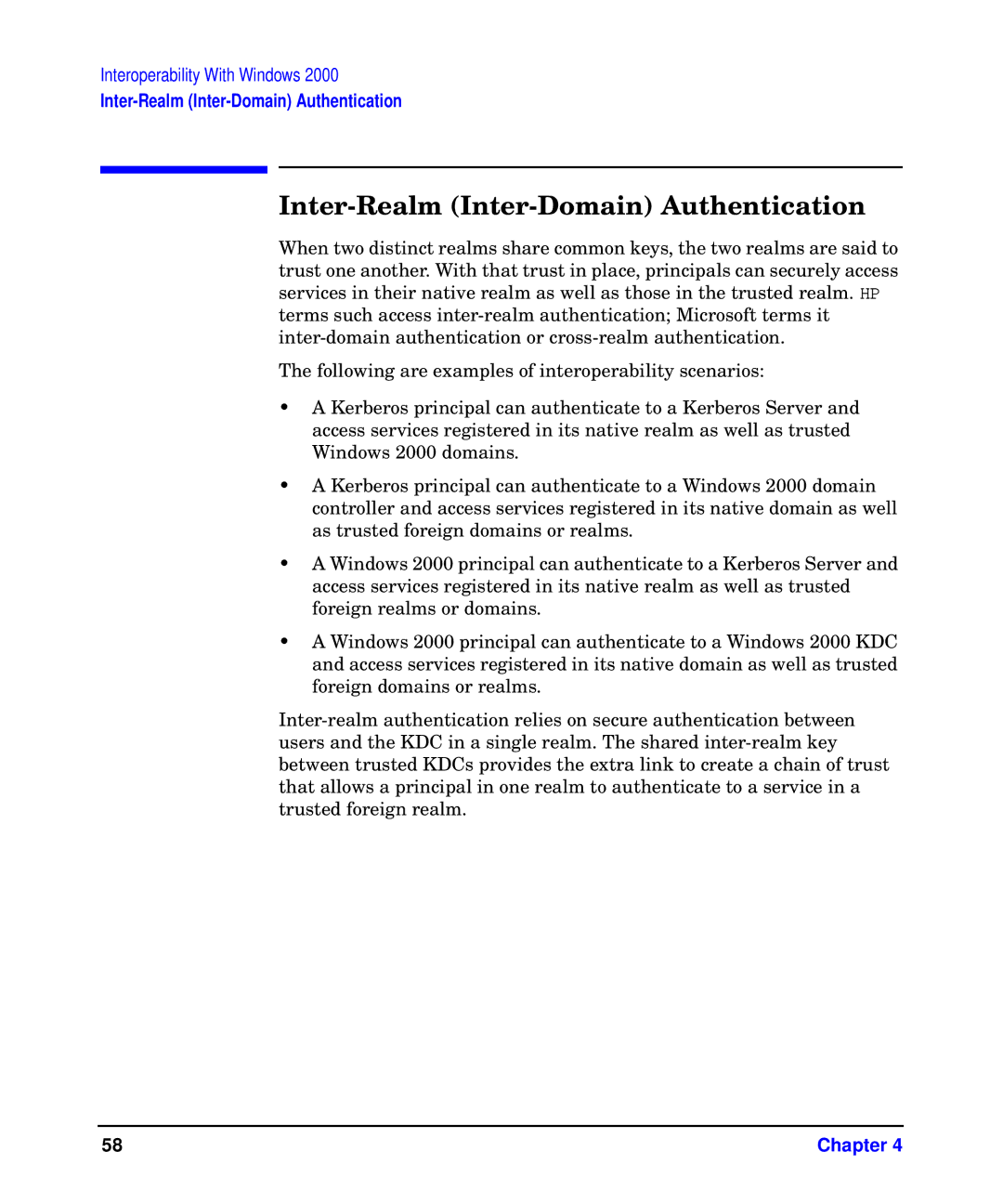
Interoperability With Windows 2000
Inter-Realm (Inter-Domain) Authentication
When two distinct realms share common keys, the two realms are said to trust one another. With that trust in place, principals can securely access services in their native realm as well as those in the trusted realm. HP terms such access
The following are examples of interoperability scenarios:
•A Kerberos principal can authenticate to a Kerberos Server and access services registered in its native realm as well as trusted Windows 2000 domains.
•A Kerberos principal can authenticate to a Windows 2000 domain controller and access services registered in its native domain as well as trusted foreign domains or realms.
•A Windows 2000 principal can authenticate to a Kerberos Server and access services registered in its native realm as well as trusted foreign realms or domains.
•A Windows 2000 principal can authenticate to a Windows 2000 KDC and access services registered in its native domain as well as trusted foreign domains or realms.
58 | Chapter 4 |
